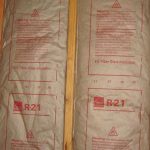Insulation Basics – Calculating R Values
A previous post –introduced R and U values
In this post we will demonstrate how to calculate R values.
Well it all starts with the thermal conductivity of the building material. The ‘k’ value. This is a measure of how fast heat travels through a material.
k values are usually stated as Watts / m2 / degree C.
Tables of typical values for ‘k’ have been provided in Design Tables. Actual values may vary from these values depending on material density and manufacturing techniques.
For any component of the building R = Thickness in metres /‘k’ (The units are square metre, degree C per watt [m²·°C/W]).
An example of the calculation follows:
Material is single skin brick with a density of 1800kg/m2 (protected from rain)
R = 0.110m / 0.71( from Design Tables.)
R = 0.155
Remember that when calculating R values the thickness counts, so if you have insulation batts that are compressed they becomes less effective.
Cavities
When it comes to cavities there are generally accepted R values as follows:
|
Cavity Width |
Heat flow Horizontal or Upwards |
Heat flow Downwards |
|
5mm |
0.11 |
|
|
20mm or more |
0.18 |
1.06 |
|
Typical loft between tiles and ceiling |
0.11 |
|
|
Between roofing material and sarking |
0.12 |
0.12 |
|
Behind tiles (or shingles on wall) |
0.12 |
The effects of reflective finishes and weather will be discussed in future posts.
See Insulation for similar Posts
For Posts about Green Building see Sustainability